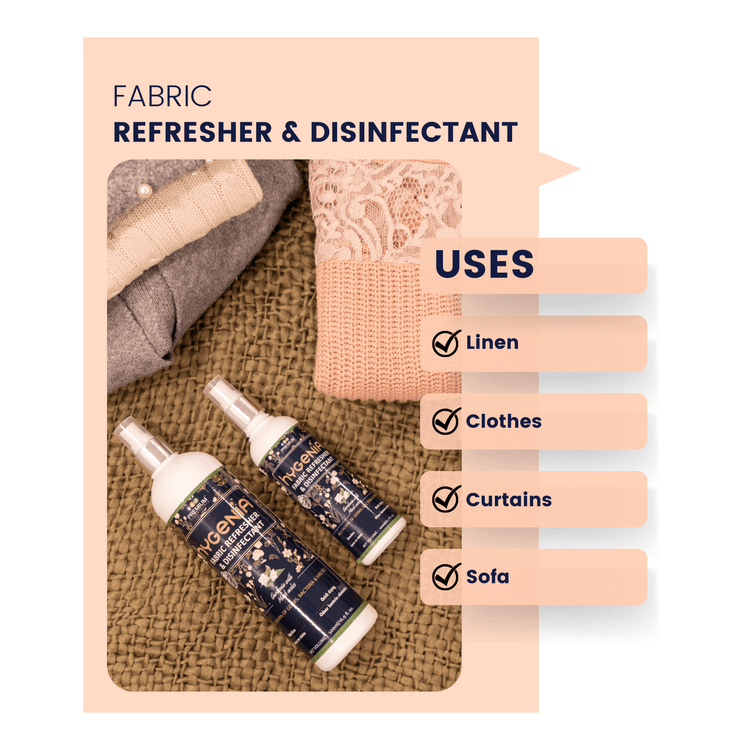There’s nothing more frustrating than spilling red wine on a crisp white shirt, dropping curry on your favourite kurta, or finding coffee stains on your work outfit. But the good news? Most stains are treatable if you know what you’re dealing with.
Mastering how to clean stains from clothes isn’t just about scrubbing—it’s about using the right method for the right fabric and stain type. What’s the proper way to do it? What products should you use to remove coffee stains and wine stains? Can you use baking soda, white vinegar, or dishwashing detergent?
For the answers, be sure to keep reading. Here’s your complete guide to tackling every kind of mess, from fresh spills to stubborn, set-in marks.
Why Identifying the Stain Matters

Before you even reach for the detergent or turn on the washing machine, pause and identify what kind of stain you’re actually dealing with. Treating every mark on fabric the same way often does more harm than good.
The wrong approach can make a stain set deeper. Different types of stains on clothes respond best to different cleaning methods:
-
Protein stains (blood, egg, dairy): Start with cold water and use an enzyme-based stain remover that breaks down the proteins gently.
-
Oil and grease stains (butter, makeup, cooking oil): Dish soap or specialized solvents work best here, as they’re designed to cut through grease effectively.
-
Dye stains (wine, coffee, tea, curry): Oxygen-based cleaners or colour-safe bleach help lift the dye molecules without damaging the fabric.
Knowing the nature of the stain is half the battle—the right treatment not only removes the mark but also protects the fabric from unnecessary damage.
Fresh Stains vs. Old Stains
If you act quickly, stains on fabric are much easier to manage and often disappear with minimal effort. The key is to move fast—blot (don’t rub!) the spill with a clean cloth to absorb excess liquid. Acting early gives you the best chance of saving your clothes without any lasting marks
But what if the stain has been sitting around for days and looks almost permanent? Don’t worry—how to remove old stains is still possible:
-
Soak the fabric in warm water mixed with a gentle fabric stain remover to loosen the particles.
-
Turn to natural helpers like baking soda, vinegar, or lemon juice, which can break down stubborn residues.

-
For white garments, oxygen-based bleach is a powerful option that can revive brightness and lift stains even after several washes.
Tackling the Worst Offenders
Some stains are legendary for just how stubborn and frustrating they can be. They cling to fabric, spread easily, and often don’t come out with a normal wash. But don’t lose hope—here’s what really works against the toughest culprits:
-
Wine: Dab immediately, sprinkle salt to absorb liquid, rinse with cold water, then wash.
-
Coffee: Rinse under cold water, apply liquid detergent directly, and launder.
-
Curry/Turmeric: Treat with lemon juice or vinegar, let the fabric sit in sunlight, then wash.
-
Grease: Rub in dishwashing liquid before rinsing.
-
Ink: Use rubbing alcohol or hand sanitiser on the spot, then blot.
With a little patience and persistence, even these notoriously tough stains can be managed successfully.
Avoid These Common Mistakes
Even when you’re careful and follow the right stain-removal methods, a few simple mistakes can undo all your effort and make the stain permanent. These slip-ups are easy to overlook, but knowing how to avoid them can help protect your clothes and extend their life.
Here are the most common errors to watch out for:
-
Never use hot water too soon. Heat causes most stains—especially protein-based ones —to set deep into the fibres.
-
Don’t scrub aggressively. While it may feel like you’re working the stain out, harsh scrubbing actually pushes the particles deeper into the fabric and can fray the fibres.
-
Avoid the dryer until you’re stain-free. Running a stained garment through a hot dryer is one of the quickest ways to “lock in” a mark.
By steering clear of these common mistakes and taking a more patient approach, you’ll not only save your clothes but also keep them looking fresher and newer for much longer. For more ways to protect delicate garments, check out our blog on Smart Ways to Care for Fabrics and Protect Delicate Garments.
Smarter Stain-Fighting Tips
-
Keep a multipurpose fabric stain remover in your laundry kit.
-
Rely on natural helpers like baking soda, vinegar, or lemon juice for everyday stains.
-
Always test treatments on a hidden area first, especially for delicate fabrics like silk or wool.
-
Blot from the outside in to keep stains from spreading further across the fabric.
-
When unsure, professional cleaning is the safest option for fragile or valuable garments.
-
For a quick refresh and long-lasting fragrance after stain removal, try the Fabric Refresher & Disinfectant – Gardenia with Musk Notes. It eliminates odours, disinfects, and keeps clothes smelling fresh.

Frequently Asked Questions
Q) How to clean stains from clothes without damaging the fabric?
A) Use mild detergents and cold water first. Follow fabric care labels to stay safe.
Q) What’s the best way to remove tough stains like wine or curry?
A) Act fast with blotting and treat with vinegar, lemon juice, or oxygen-based stain removers.
Q) Can old stains on fabric be removed completely?
A) Yes, with soaking and repeated treatments. Some may fade, but persistence pays off.
Q) Which fabric stain remover works on multiple stain types?
A) Oxygen-based removers are versatile and safe for most fabrics.
Q) How do I identify different types of stains on clothes?
A) Think about the source: is it oil, dye, protein, or ink? The texture and colour usually reveal the type.
Q) Are there home remedies for stains?
A) Yes—vinegar, baking soda, salt, and lemon juice often do the trick naturally.
Wine, coffee, curry—whatever life throws your way, it doesn’t have to ruin your clothes. With the right techniques, you’ll always know how to get rid of stains on clothes quickly and effectively. Just remember: act fast, choose the right method, and keep your favourite fabric stain remover handy.














